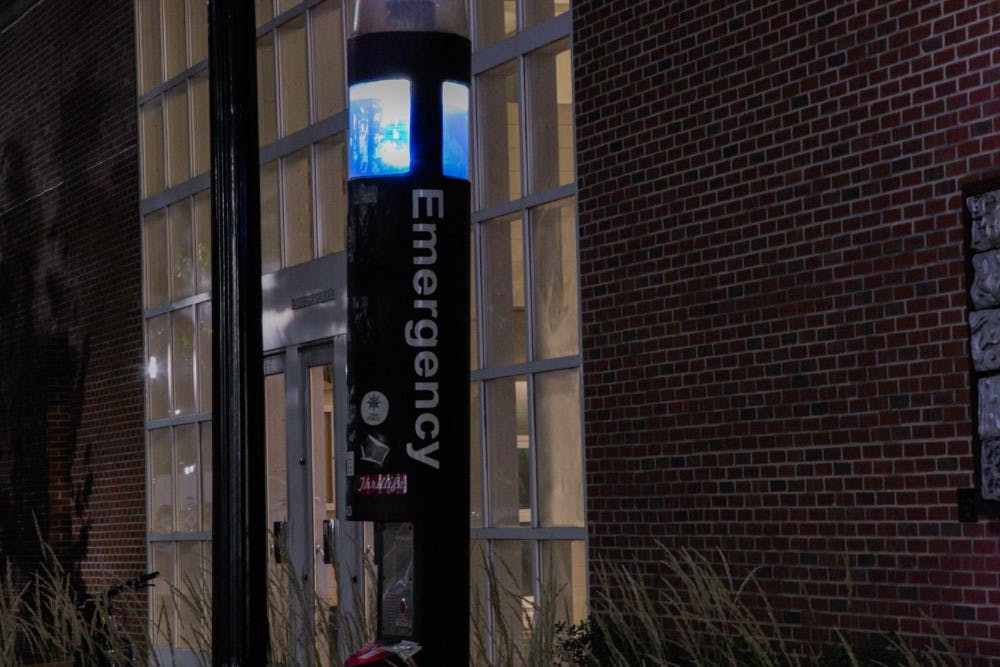On the way back to her dorm from a party last year, a UNC student stopped at the field hockey bathrooms and spent the next few hours vomiting. She said she thinks she might've been drugged.
When the student, who asked to remain anonymous for privacy reasons, was able to walk out of the bathroom, she pressed the call button at the closest blue light call box.
“I told them that I needed emergency services,” she said. “I needed an ambulance or something because I felt really, really bad.”
An ambulance arrived soon after, taking her to receive medical care.
“Because I didn’t have my phone or my keys, otherwise I probably just would’ve been in the bathroom on the floor,” she said.
The call box she used is one of nearly 300 on UNC’s campus today, according to Randy Young, media relations manager for UNC Public Safety. He said in an email statement that when the boxes were initially installed on campus over 30 years ago, there were just over 100.
The push button of a call box immediately contacts a 911 dispatcher at the UNC Police Department and sets off a strobe light for police to easily locate the caller.
Although students learn how to use them during new student orientation, the number of call box activations has decreased over the years. UNC continues maintaining the call boxes, but some universities have removed them due to costs, low use and mobile safety apps.
The University of Nebraska-Lincoln removed all but two of their over 85 call boxes in 2017, Police Operations Captain John Backer said.




